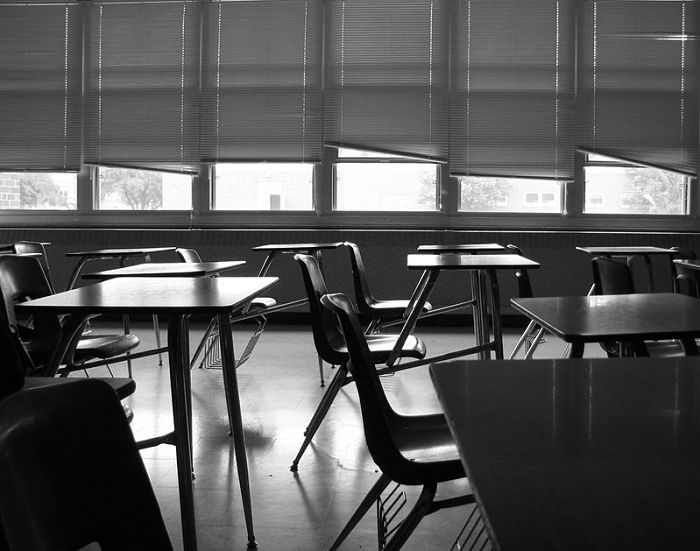Coronavirus UK – Why Closing Schools is (Generally) a Bad Idea

School closures are widely seen as a quick fix for COVID-19 transmission. The UK government’s resistance to this measure has provoked considerable concern, including a petition to Parliament that has gathered over a half-million signatures at the time of writing. In practice, however, the effects would mainly be risky for children and the consequences would other institutions’ efforts to work as normally as possible.
Closing schools would certainly not directly benefit the children affected. For as yet unexplained reasons, children do not seem to develop symptoms from exposure to the COVID-19 virus, although they may carry it. If they do carry it, they are not ‘superspreaders’ in the way that they are for influenza viruses. At some point, older schoolchildren do become more at risk – during secondary or high school years rather than at the stage of nursery, day-care, kindergarten, primary or elementary schooling.
Closures may, in fact, have an immediate cost in terms of depriving children of the opportunity to acquire immunity to the infection. They unarguably come with costs in depriving poorer children of safe care and regular meals. Children with disabilities lose their access to environments that are more enriched than most private homes can offer. Teachers are more likely to be at risk from each other, and from their out-of-school lives, than from mixing with children in class.
When considering school closures, it is worth remembering why states introduced free, compulsory education in the first place. Although this is often told as story about upskilling workforces, most social historians also point to the importance of providing safe childminding services while parents worked. Humanitarian labour laws and technological change pushed children out of 19th century factories but did not provide alternatives. Parents had to entrust their small children to informal and unregulated carers, resulting in numerous abuses and scandals. Older children drifted around on the streets, begging or committing petty crimes. They were seen to cause trouble or to be troublesome. Compulsory schooling swept all of these children into environments where they could be protected and supervised.
School closures turn the clock back to the 1850s. They immediately reduce an already depleted national workforce. Parents will either have to stay at home or make alternative arrangements. Most of these parents will be mothers – and the health and social care sector is one of the biggest employers of women. Closing schools makes shortages of nurses and other care workers worse just when more is being asked of them. It also undermines the attempt to encourage parents to work from home – at the same time as meeting their children’s needs? The effects would ripple across the whole economy. There is a view that the UK government is too concerned with the economy at the expense of saving lives. Ironically, this is frequently and noisily expressed by precisely the same people who have pointed to the negative effects of an under-performing economy on health and mortality. Austerity and unemployment also kill people. Minimising the toll of the pandemic also needs to take account of these potential consequences.
The alternative is the use of informal care arrangements. Churches or other voluntary organizations might step in to run playschemes or lunch clubs, as they do over the summer holidays. However, this simply relocates the mixing of children into spaces that are not designed for them. It does not block the transmission of the virus and introduces a new set of health and safety risks. Individual neighbours, friends or grandparents might step in, much as they do now when there are occasional closure days. However, we are also trying to discourage inter-generational contacts as a way to protect older people. There is also a considerable difference between looking after children for an odd day or a few hours and sustaining this for weeks or months. Such ad hoc arrangements also bring their own risks. We have an elaborate system for screening people who work with children in order to exclude abusers. This does not apply to informal provisions. Would advocates of closure want to place children at greater risk from predators?
Do we want older children left to their own devices for long periods of time? Does any parent seriously imagine teenagers will all sit in their bedrooms Facetiming each other? Wouldn’t they just find other places to hang out together? What are the implications for low-level drug abuse, petty vandalism or teenage pregnancy rates? If we open alternative provisions for this age group, we are, again, simply relocating the mixing.
Schools should only close if they cannot safely care for their pupils or students. If the rate of staff sickness calls this into question, then retired teachers, trainees, or community volunteers could be brought in. Even if they had not recently been screened, their involvement with children would be visible and under professional supervision and leadership. School environments are designed for the protection of children as well as their education. More innovation is needed here rather than simply dumping the problem of child care on other parts of society.
While schools like to think they are purely concerned with education, they are also the nation’s childminding service. In a pandemic emergency, this is a critically important role. Staying open is the biggest contribution they can make to helping us all get through the crisis.




























































































